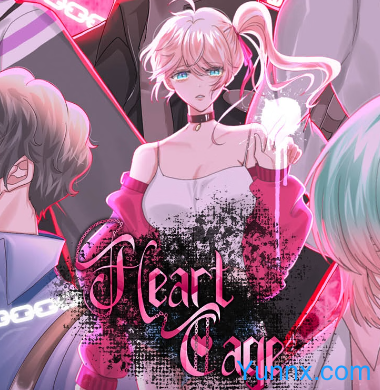Guide to Yu-Gi-Oh! Trading Card Game: Core Rules, Deckbuilding Strategies, and Advanced Tactics
May 07, 2025
Yu-Gi-Oh! is a globally renowned trading card game (TCG) that combines strategic deckbuilding, resource management, and dynamic gameplay. This guide will walk you through essential mechanics, competitive strategies, and tips to dominate duels, whether you're a newcomer or a seasoned duelist.
1. Core Gameplay Mechanics
Objective
Reduce your opponent's Life Points (LP) from 8,000 to 0 using monsters, spells, and traps.
Turn Structure
A turn consists of six phases:
1. Draw Phase: Draw one card.
2. Standby Phase: Resolve mandatory effects (e.g., maintenance costs).
3. Main Phase 1: Summon monsters, set spells/traps, or activate effects.
4. Battle Phase: Declare attacks with monsters.
5. Main Phase 2: Adjust your board after battle.
6. End Phase: Discard excess cards (if holding >6) and resolve end-of-turn effects.
Summoning Mechanics
Normal Summon: Play a monster face-up in Attack Position or face-down in Defense Position (once per turn).
Tribute Summon: For high-level monsters (Level 5–6: 1 tribute; Level 7+: 2 tributes).
Special Summon: Use card effects to summon from the hand, deck, graveyard, or Extra Deck (e.g., Fusion, Synchro, Xyz, Pendulum, or Link Summon).
Key Zones
Main Monster Zones: 5 slots for monsters.
Spell/Trap Zones: 5 slots for spells/traps.
Extra Deck Zone: Holds Fusion, Synchro, Xyz, and Link Monsters. Post-Master Rule 2020, Fusion/Synchro/Xyz Monsters can also be summoned to Main Monster Zones.
2. Deckbuilding Essentials
Deck Composition
Main Deck: 40–60 cards (optimized at 40 for consistency).
Extra Deck: 0–15 Fusion, Synchro, Xyz, or Link Monsters.
Side Deck: 0–15 cards for post-match adjustments.
Archetypes and Synergy
Build around cohesive archetypes (e.g., Dark Magician, Blue-Eyes, Sky Striker) for synergistic effects. For example:
Sky Striker: Focus on spell-based control and Link Summoning.
Gladiator Beasts: Swarm the field and tag out for stronger monsters post-battle.
Key Card Types
Hand Traps (e.g., Ash Blossom & Joyous Spring): Disrupt opponents during their turn.
Staples: Include versatile cards like Raigeki (mass removal) or Harpie’s Feather Duster (backrow destruction).
3. Advanced Strategies
Resource Management
Card Advantage: Prioritize effects that draw cards (e.g., Pot of Greed) or recycle resources from the graveyard (e.g., Monster Reborn).
Graveyard Utilization: Use cards like Dragon Shrine to send key monsters to the graveyard for revival later.
Combo Execution
Xyz Summon: Overlay two Level 4 monsters (e.g., Gagaga Magician + Goblindbergh) to summon Number 39: Utopia.
Link Climbing: Use Link Monsters like Knightmare Phoenix to unlock additional Extra Deck zones and extend combos.
Disruption Tactics
Negation: Counter opponent’s plays with traps like Solemn Judgment or monster effects like Borreload Savage Dragon.
Chain Blocking: Sequence effects to protect key plays (e.g., activating Mystical Space Typhoon before an opponent’s search effect).
4. Meta Adaptation and Tech Choices
Anti-Meta Cards
Droll & Lock Bird: Shut down opponent’s search-heavy decks (e.g., Salamangreat).
Nibiru, the Primal Being: Punish combo decks that special summon 5+ times in a turn.
Side Decking
Adjust your deck between matches to counter popular strategies:
Vs. Control: Add spell/trap removal (Lightning Storm).
Vs. Combo: Include hand traps (Infinite Impermanence).
5. Common Mistakes to Avoid
1. Overextending: Summoning too many monsters risks losing them to board wipes (Dark Hole).
2. Misunderstanding Priority: Failing to declare phase transitions can lead to missed interactions.
3. Ignoring Card Text: Misinterpreting effects (e.g., confusing "destroy" vs. "send to graveyard") can cost games.
6. Tournament Tips
Time Management: Track phases clearly to avoid disputes (e.g., declaring "End of Battle Phase").
Rule Enforcement: Call a judge for unclear interactions (e.g., improper chain resolution).
Conclusion
Yu-Gi-Oh! rewards adaptability, foresight, and precise execution. Master core mechanics, optimize deck synergy, and stay updated on meta shifts. For detailed rulings and card databases, visit official resources like [Yu-Gi-Oh! Database](https://www.db.yugioh-card.com/) or community hubs like [Yugipedia](https://yugipedia.com/).
Key Terms:
Chain (チェーン): Sequence of effect activations.
OTK (One-Turn Kill): Defeating an opponent in a single turn.
FTK (First-Turn Kill): Winning before the opponent takes a turn.
Recommend Apps









